In the same fashion that we did our save-the-dates, we are DIY’n the formal invitations using another custom stamp by local stamp-maker, Native Bear. The stamp decision was made long ago but the paper decision was a little more difficult to decide on. Originally I thought I wanted to dip dye watercolor paper with indigo dye but after hearing that it can rub off on your hands and clothes, I nixed that idea. Then I experimented with an ombre’ effect using watercolor and wasn’t totally satisfied with that outcome soooo I went with another idea-
Cyanotypes!
I had first encountered cyanotypes during a Root City Market at one of the interactive booths they have set up for kids (and adults like me that like to craft!) and had fun with the freedom to play around with negative space and loved the bold blue end result. So mom and I ordered 200 5×7 cards from Cyanotype Store and completed step one of our custom invites!
The process is ridiculously easy but here are some pretty step-by-step photos and at the end I’ll share some tips + lessons learned the hard way!
First step is to pick out what types of plants and materials you want to use. I stuck with plants but the possibilities are endless! Mass Collective, the folks behind the first time I did a cyanotype, had everything from rice to plastic toy animals. Other things you could use are letters, feathers, fossils, paper cut-outs such as a doily and really anything else your heart desires! Just remember, anything solid is going to be white, so if it’s just a big solid object that’s going to be a lot of positive space in the print.
Since the paper is very sensitive to light they come in a black plastic bag that you’ll want to keep them in right up until the very moment you’re ready with the materials you want to place on the paper.
After you set the object on the paper, let it expose in the sun. Time will vary depending on the sun intensity. Overcast=longer. Directions said 10-15 minutes but that was way too long for ours since the sun was crazy intense that day. Expose until the paper turns a sky blue and don’t expose too long or it’ll turn white and then the whole print will just be blue.
The thicker foliage turned out better in my opinion. I liked the prints with the rosemary and whatever plant that is in the upper right-hand corner. But adding specs of little details is also a nice touch. You can also move things around and get lighter effects and double-exposure.
Remember, the freedom is all yours! Well, as long as you have lots of prints to experiment with, we bought more than we needed in case some didn’t work out, and I’m glad we did. There were a bunch of duds.
Next up is to rinse. Once the print is exposed how you like, take the paper and place in a tray of regular water.
Tip: Don’t push from the middle of the piece of paper but instead cut in by “diving” one edge of the paper into the water and letting it rinse over the image *I don’t know how else to word this but basically make the plunge as even across the print as possible.
The water stops the developing so when you hang them the clothespin shouldn’t make a mark on the print. But if this worries you, scroll down and read the tips about how-to dry.
How gorgeous, right??? We are so happy with the outcome and how each are completely unique to the next!
The paper has a pretty texture to it as well, sort of like watercolor paper, and the color turned out perfectly.
Lessons learned:
-Even though I mentioned this above, I want to reiterate: Don’t expose TOO long. If the paper turns white, it’ll be all blue. The directions say 10-15 but I’d say to judge by the sun. On this day it was extremely sunny and so we didn’t have to expose nearly as long as the directions.
-If doing a big batch, change water frequently. Also, we thought having the water in the shade was better, not scientifically proven, but we thought it made a difference with stopping the exposure.
-When prints are in the water, don’t let them overlap, this’ll cause lines and odd exposures. And also don’t let them sit on top of the water un-submerged completely because they’ll shrivel up (almost like a wilting effect).
-If you’re using real plants you’ll want to have plenty and keep some in water because they’ll wilt in the sun. We had clovers but they wilted so fast we couldn’t really use.
-Don’t dry on flat surface, a grated rack is better or hanging from a line of string. If none of these are available, laying papertowels on a flat surface will do fine, just change them regularly as they’ll get pretty wet and not allow the print to dry.
–DO NOT DRIP ON ANYTHING OF IMPORTANCE. We did this in the front lawn and I hung all the prints on the porch, thus dripping all over the place, and even though I rinsed it thoroughly afterwards with the hose, it looks like a bad tie dye job! Apparently, the water that drips off carries the indigo-colored ink with it. I think what happened was that even though I rinsed, the sun ended up exposing the droplets.
Next step for us is to stamp each cyanotype with our wedding stamp and get them out the door!

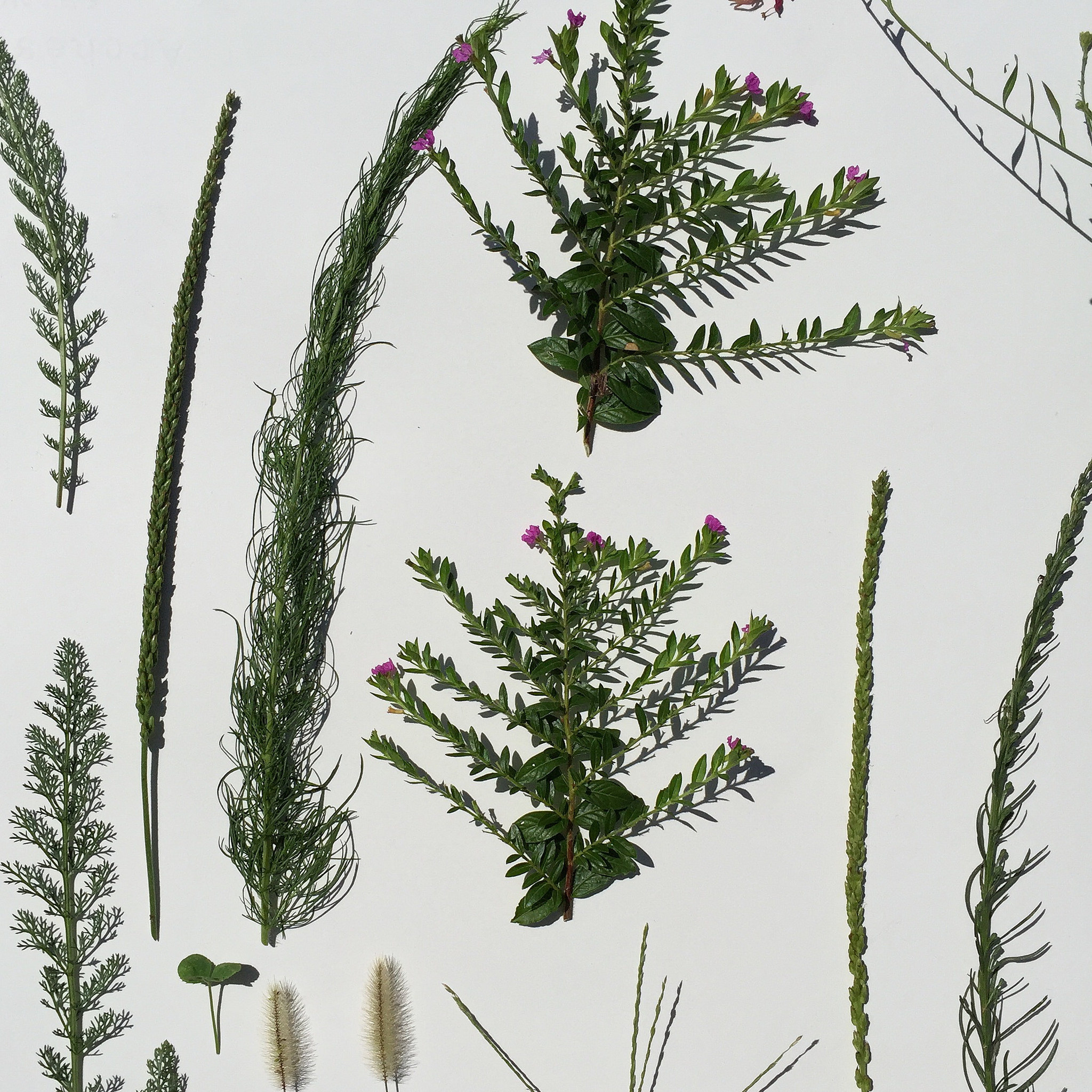
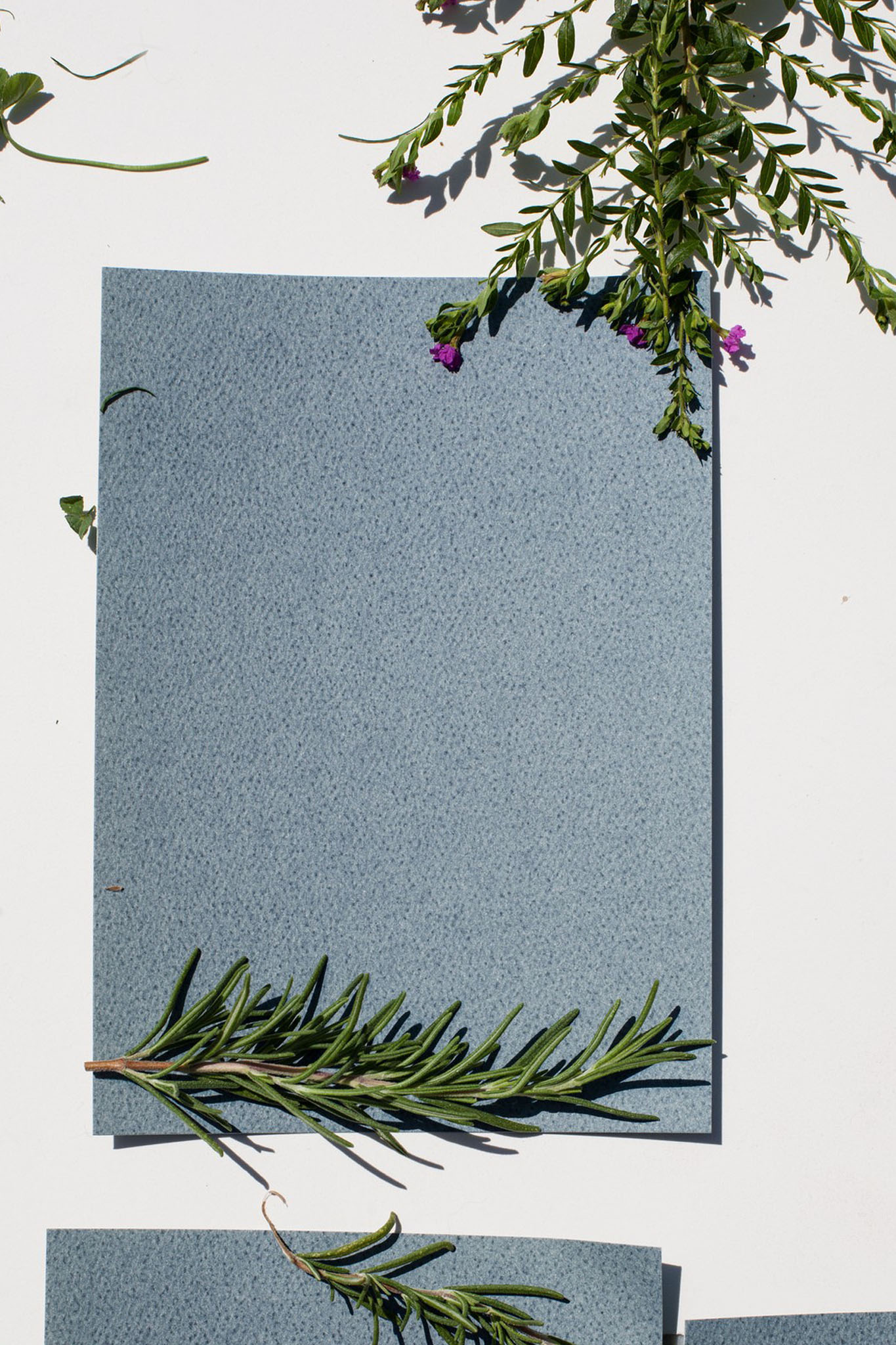
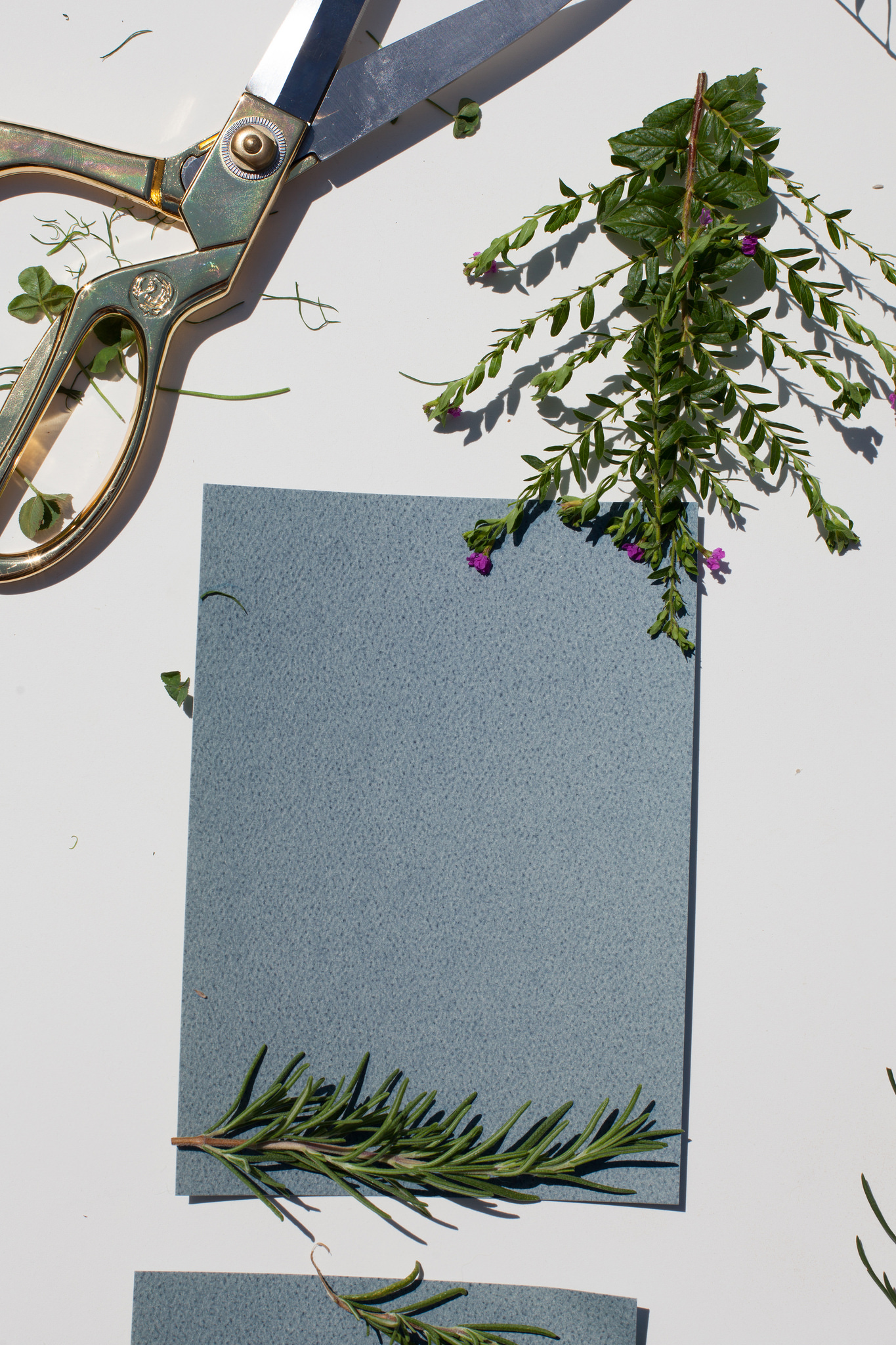
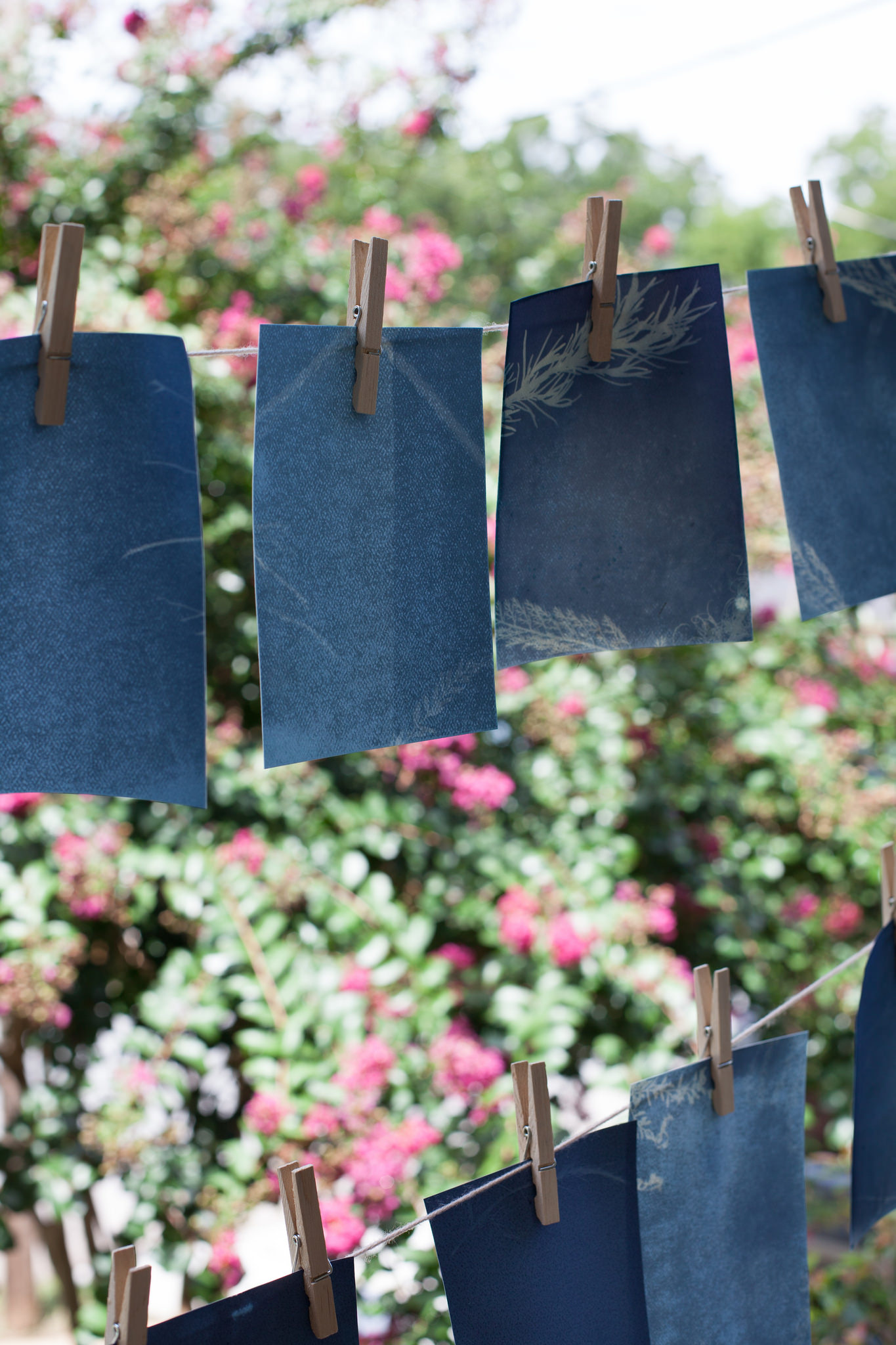
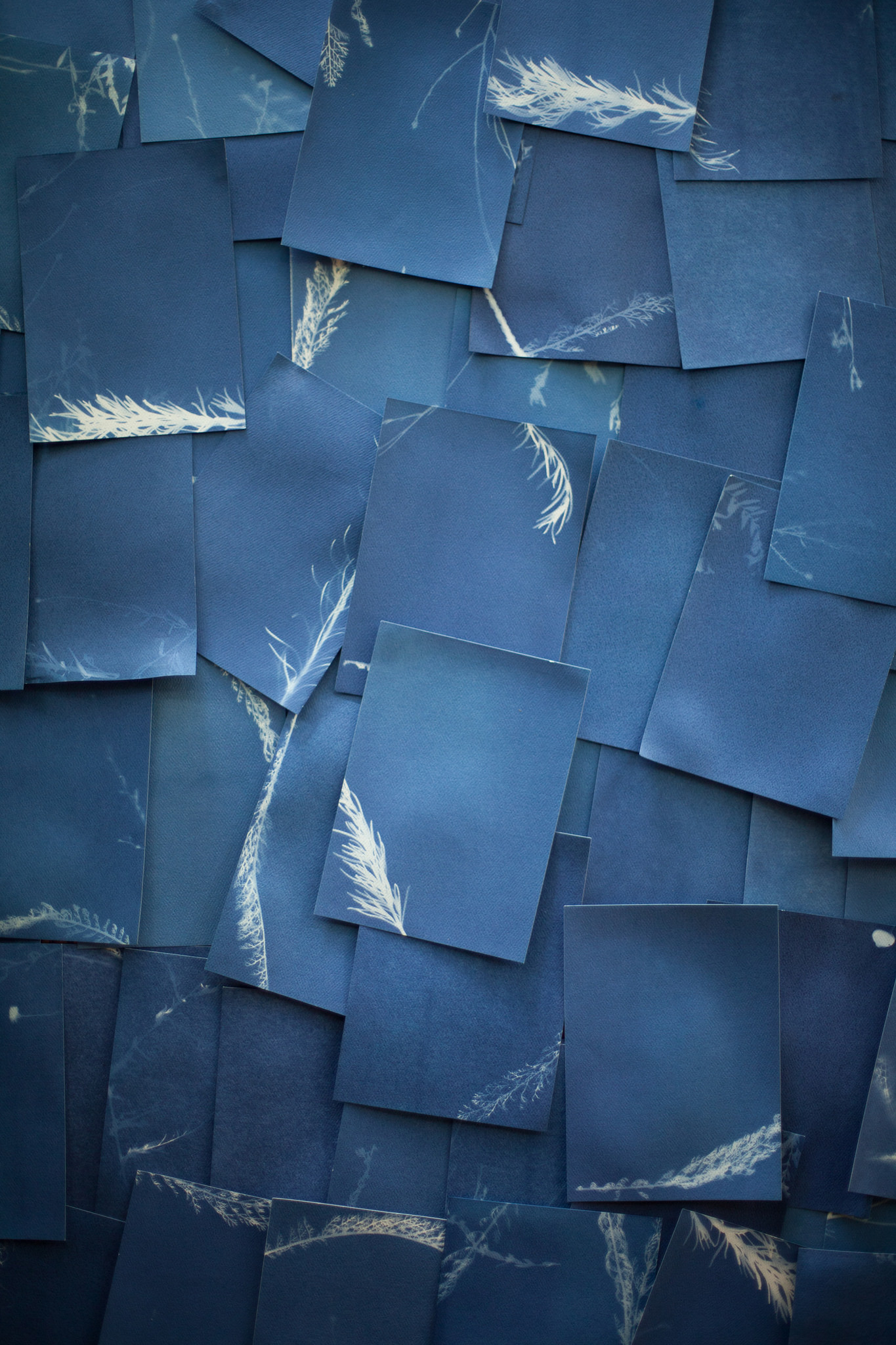


No Comments